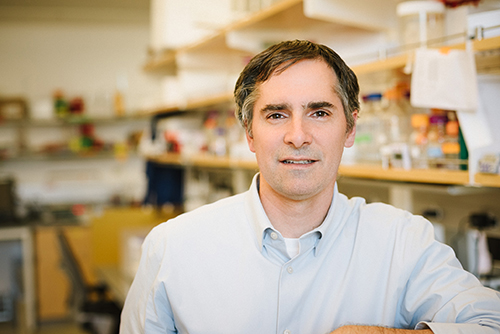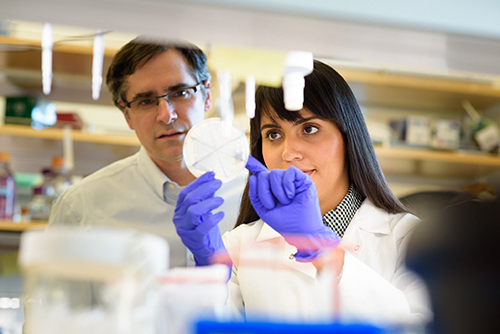Ramping up Production of Vital Industrial Products
As ancient hieroglyphics hint, Egyptians used strains of yeast at least five thousand years ago to produce beer and other alcoholic drinks, and to leaven bread. With its ability to ferment plant sugars into alcohol, the lowly microorganism became the first agent of biotechnology, lifting the spirits of people around the world.

This same trait underlies the modern production of biofuels. Bioengineers tweak yeast’s metabolic habits, channeling and speeding fermentation of corn and sugar cane into ethanol and valuable industrial chemicals.
The species of choice has been the common baker’s yeast, Saccharomyces cerevisiae. Its genetics are relatively easy to study and research has led to many insights about genetic control of complex traits.
The yeast species has become a workhorse in bioproduction -- the basic prototype of a living chemical factory for industrial chemical production. But as familiar and useful as it is, it has limitations, says Jamie Cate, professor of biochemistry. Cate focuses on broadening the types of industrial chemicals that can be produced through yeast fermentation, and accelerating the process.
“We need to have a yeast that can handle industrial conditions,” Cate says. “Saccharomyces cerevisiae is pretty fragile for industrial processes. It doesn’t grow at high temperatures and it’s sensitive to impurities. Its performance drops in harsh industrial conditions.”
In addition, he says, the species is primed to metabolize primarily two sugars: sucrose and glucose, limiting the potential products it can be engineered to produce.
“It’s hard to steer the carbon from these sugars into the product you want, like high-value chemicals for use in consumer products, such as plastics, or a next-generation biofuel.
“Basically, we want to use the organisms as catalysts to convert one form of chemical into another. We need to be able to put things in or take things out of yeast DNA to program the yeast with metabolic pathways ideal for making a new chemical.”

Supported by the Bakar Fellows Program, Cate and graduate student Raissa Estrela are laying the groundwork for employing a different, hardier and more versatile yeast species to generate new biofuels and a range of industrial chemicals.
“We’re trying to create a new platform organism for industrial synthetic biology,” Estrela says. “Other yeasts are far more robust and should be able to serve as better industrial hosts.”
Among “non-standard” yeast species, one known as Kluyveromyces marxianus has outstanding potential, Cate says, due to its appealing traits.
“It tolerates a wider range of temperatures. It can use a broad source of carbon released from plant cell walls – not only sucrose and glucose. And it has one of the highest growth rates among microbes, apart from bacteria.”
Cate and Estrela are overcoming major challenges to get K. marxianus to industrial potential. A key challenge is gaining “full genetic control” of the species. They need, for example, to prod the yeast to produce new enzymes that can break down sugars and also help control the conversion into new chemicals.
To that end, Estrela is trying to exploit a range of genetic manipulations in the new species that have been perfected in the current workhorse, including the use of the powerful new CRISPR gene editing technology.
The Bakar Fellows Program also supports Estrela’s research in collaboration with colleagues in the biotech sector of Berkeley’s Haas Business School to identify companies and industries that could gain major momentum from the new technology she and Cate are developing.
Ambitious projects to employ biology to make efficient and versatile chemical production alternatives are already underway in companies ranging from industrial giants like Dupont to startups.
Cate sees great potential in the new strategies he and Estrela are developing, and the Bakar Fellows Program’s recognition of its commercial promise.
“We are excited the Bakar Fellows Program is helping us accelerate our vision to revolutionize yeast as a platform for the renewable chemical industry.”
